Previously in this series I started with some plant disease basics and then covered some common fungal plant diseases. Now let’s turn our attention to bacteria. Just like with fungi before, this installment of the series, I’m going to talk about some of the most common bacterial plant diseases with some suggestions for treatment and prevention. This by no means will be an exhaustive list of diseases (there are so many!), but I hope to cover some of the most common ones that trouble gardeners. Most diseases have similar control and treatment options which will be shared in a section at the end, but special cases are noted in the list of diseases.
Fireblight (Erwinia amylovora)
- Signs & Symptoms: Wilting and blackened young shoots with “shepherds crook” bend, brown/burnt blossoms
- Host plants: Apple, pear, quince, and relatives
- Treatment notes for Fire Blight: The bacteria is spread through pollen during bloom. Most common treatment is pruning out affected branches. Some application of the antibiotic streptomycin may help, but it must be applied to flowers and care must be taken to avoid potential side effects for pollinators. Use of copper fungicides in the dormant season may limit spread.
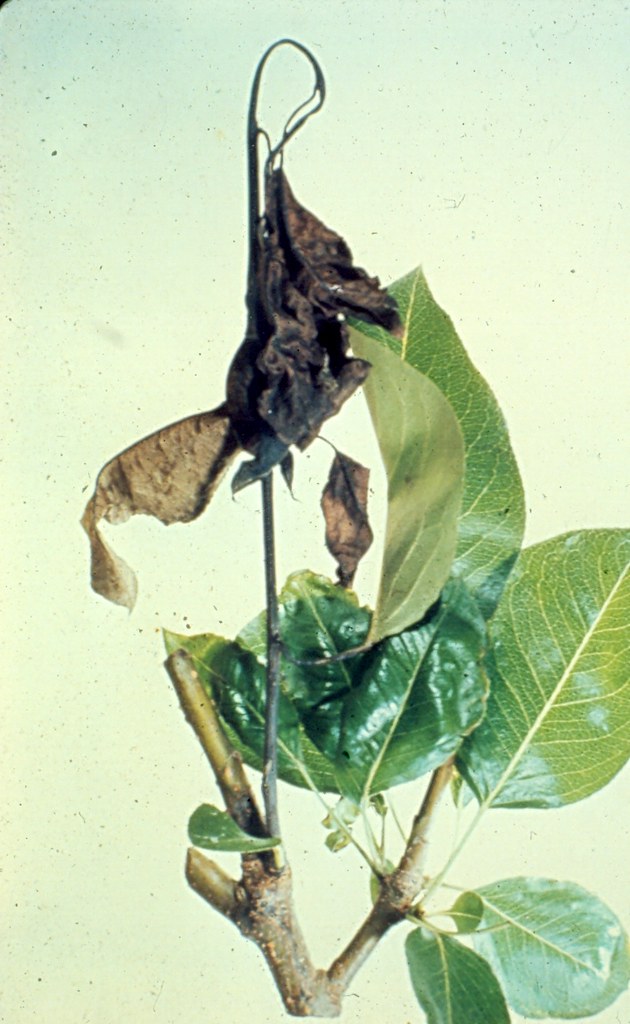
Bacterial Leaf Spot (Xanthomonas spp.)
- Signs & Symptoms: Small, water-soaked lesions on leaves; dark lesions with yellow halos, premature leaf drop and reduced plant vigor
- Host plants: Various, including tomato, pepper, and crucifers

Bacterial wilts (Ralstonia solacearum, solanaceous crops; Erwinia tracheiphila; cucurbits; others)
- Signs & Symptoms: wilting of leaves, usually rapidly and whole branches at a time; yellowing and browning of leaves; vascular tissue discoloration; rapid death
- Host plants: solanaceous crops, cucurbits, many others
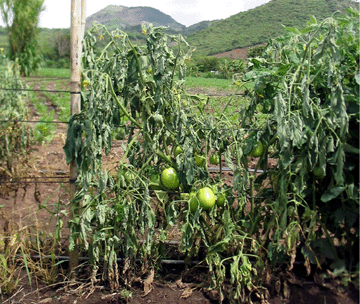
Crown Gall (Agrobacterium tumefaciens)
- Signs & Symptoms: tumor-like growths/galls on stems, roots, and crowns; stunted growth and reduced yield
- Host plants: many
- Fun fact: A. tumefaciens transmits a small bit of DNA to the host plant, a circular plasmid, that causes the tumor-like growth. This was used as one of the first methods (and is still used) to genetically engineer plants by introducing new DNA.
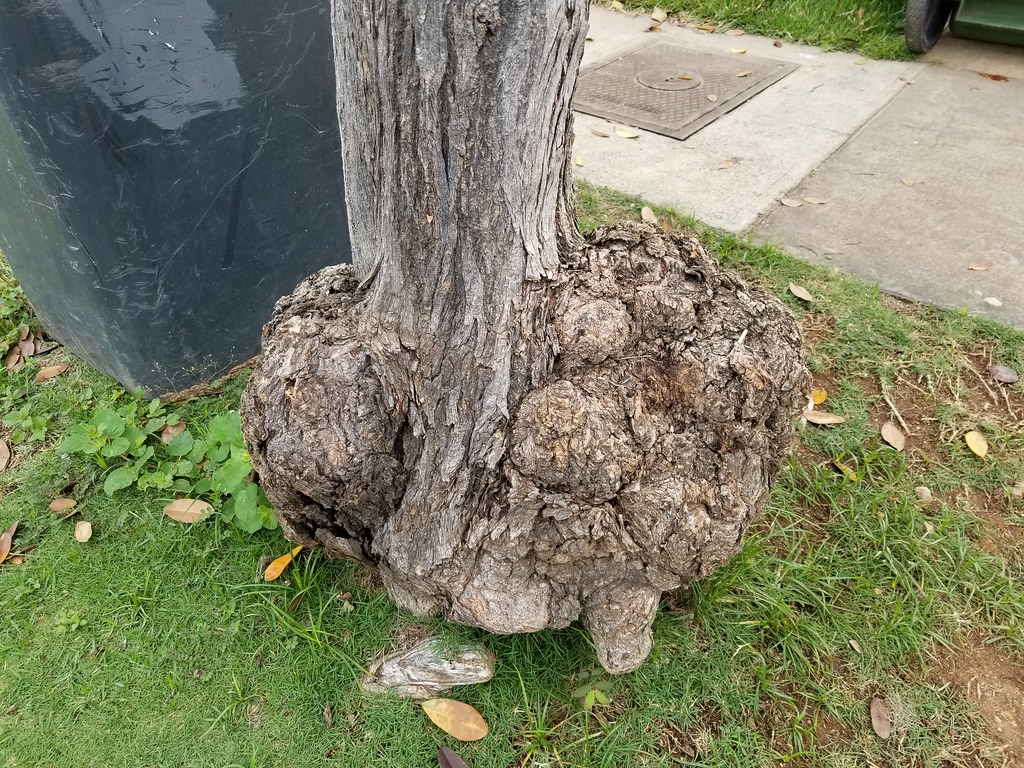
Bacterial Soft Rot (Pectobacterium and Dickeya spp., others)
- Signs & Symptoms: water-soaked, mushy, and foul-smelling lesions on plant parts, especially fruits and tubers (the classic “rotten potato” smell); rapid decay, slimy
- Host Plants: potatoes, others
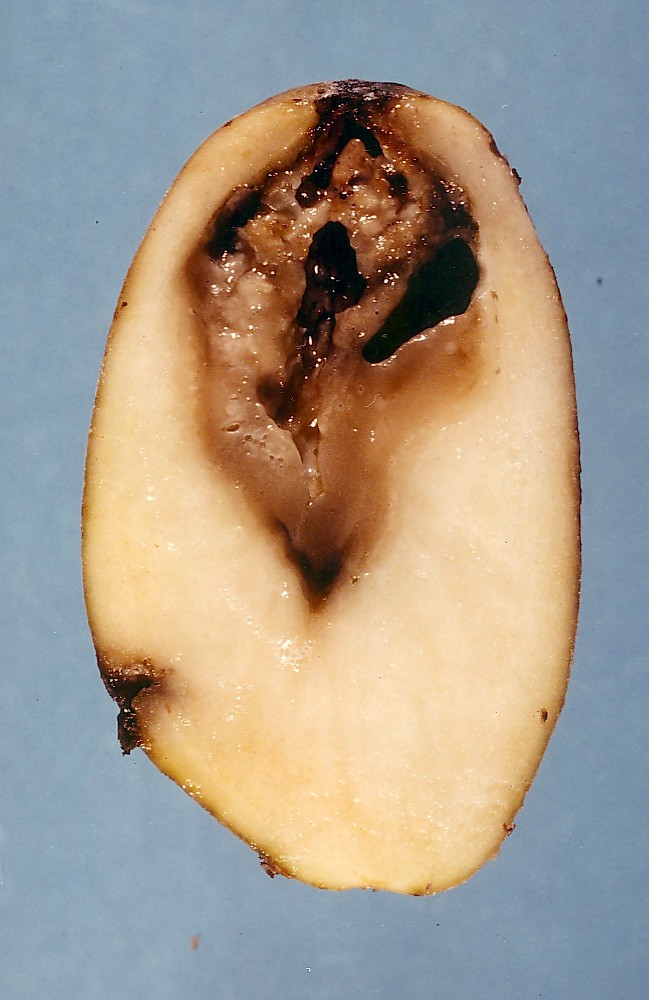
Angular Leaf Spot (Pseudomonas syringae)
- Signs & Symptoms: angular, water-soaked lesions on leaves; lesions are often limited by leaf veins; premature leaf drop and reduced vigor
- Host Plants: cucurbits, most commonly cucumber
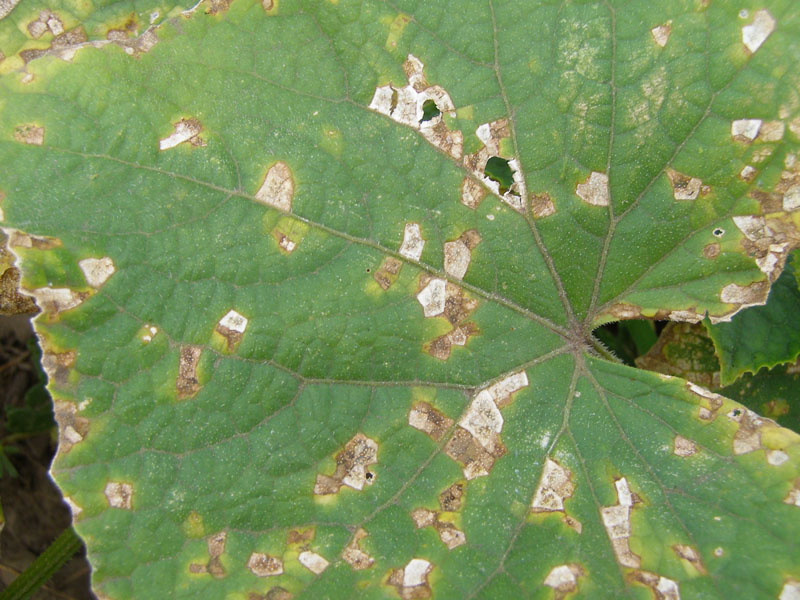
Bacterial Canker (multiple)
- Signs & Symptoms: Canker-like lesions on stems and other plant parts; lesions may or may not ooze bacterial exudate; for citrus canker, lesions are common on fruits as well
- Host Plants: many, usually pathogen specific

Bacterial Ring Rot (Clavibacter michiganensis)
- Signs & Symptoms: brown ring/rot inside tubers; foliage yellowing and death
- Host Plants: Potato, sometimes tomato

Treating Bacterial Diseases
Just like I discussed with fungi last month, it is difficult to eliminate bacterial diseases once present. Treatment focus should be on slowing down the spread of the disease to the remaining plant. Treatment is important for annual plants, which may be killed entirely by pathogens, and in woody perennials where symptoms include cankers or rots that affect perennial plant parts such as stems or trunks. Bacterial diseases that affect only foliage on perennial plants are less of a threat and often the damage is limited to aesthetics.
For the most part, removal of the diseased plant parts is an important first step in treating the disease. Bacteria stream, or ooze, through plant parts (this is why signs and symptoms are sometimes limited by plant structures, like angular leaf spot lesions being stopped by leaf veins). Therefore the organism may be present a distance away from the visible sign or symptom. For cankers and other stem infections, removal should include “healthy” tissue below (between the callus and main plant).
Sometimes this may require removal of large parts of plants, at which point decisions should be made about removal of the entire plant. Cankers occurring on main stems or trunks are especially devastating.
Once affected plant parts are removed, a treatment with a copper-based product may reduce spread. While often used as a fungicide, copper does have some effect on bacteria. Except for in the case of fire blight (usually in commercial orchards), treatment with an antibiotic is not practical or possible. Often repeated treatments through the season are needed once the disease is established in the nearby environment. Care should be taken to not overuse copper sulfate, as it will not break down in the environment and can build up in the soil, causing damage to populations to good fungi and bacteria in the soil.
Bacterial Prevention through IPM
Just as in fungal diseases, there are several Integrated Pest Management strategies that can be used to reduce the likelihood of bacterial infection in your garden or landscape. Below are some strategies that can be used for general fungal prevention:
- Use mulch to limit splashing of soil onto plants
- Eliminate overhead watering to reduce foliar moisture
- If overhead watering is necessary, water early in the day so plants dry out before the dew point drops in the evening
- When possible, plant disease resistant cultivars
- Reduce nearby weeds to eliminate potential secondary hosts
- Practice good hygiene in the garden by cleaning up any fallen or diseased leaves, fruits, etc.
Wrapping it up
There are lots of bacterial diseases that can damage or kill plants in our gardens or landscapes. Prevention is key, as treatments only help slow the spread of disease. In the next installment, we’ll talk about viruses and virus-like pathogens. Stay tuned!
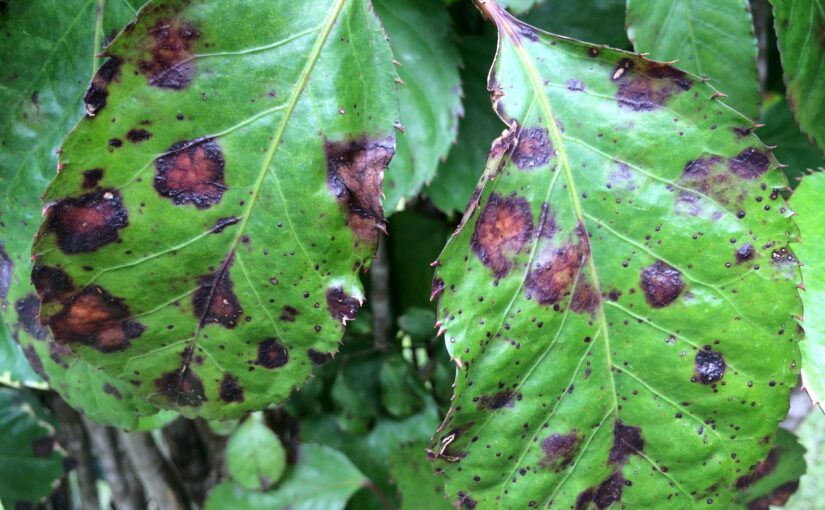
Something should be said in this article about sanitation practices during pruning that reduce the human transmission of bacterial plant pathogens.
Mechanical transmission is real.